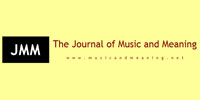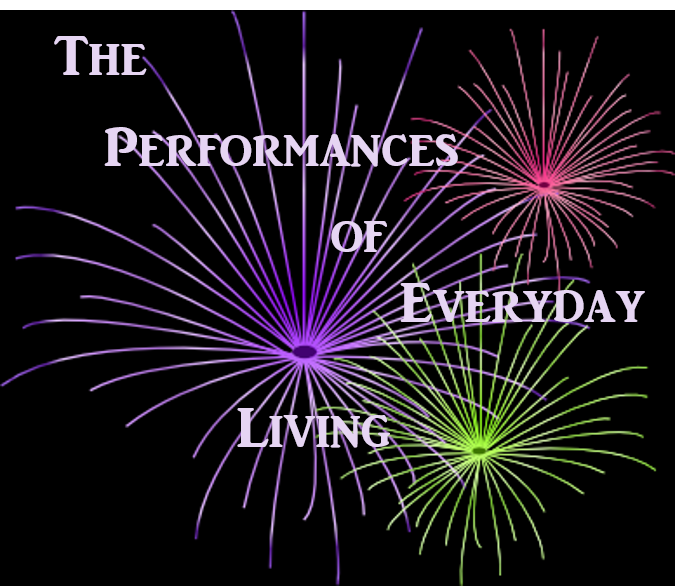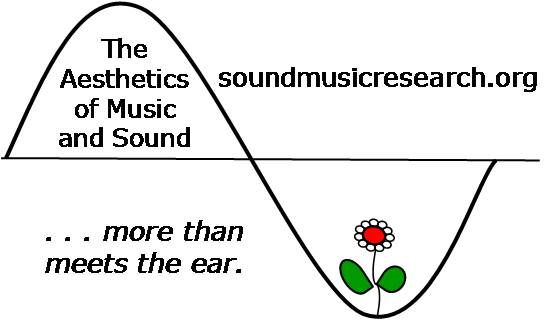|
 Seminars Seminars

Series: Topics in the Aesthetics of Music and Sound
University of Southern Denmark, Campusvej 55, 5230 Odense M, Denmark







 English: All of the seminars are conducted in English (unless, of course, all participants present during a given seminar happen to English: All of the seminars are conducted in English (unless, of course, all participants present during a given seminar happen to speak Danish). speak Danish).

 Skype: Throughout the semester, we will continue to experiment with long-distance audience participation via Skype. This has proven to be quite successful, with audience members participating from as many as four countries at a time! If you are interested in attending a Skype: Throughout the semester, we will continue to experiment with long-distance audience participation via Skype. This has proven to be quite successful, with audience members participating from as many as four countries at a time! If you are interested in attending a  seminar in this manner, please get in touch with Cynthia M. Grund a few days in advance at cmgrund@sdu.dk. seminar in this manner, please get in touch with Cynthia M. Grund a few days in advance at cmgrund@sdu.dk.
 Lunchtime Concerts: Please note that there will be a number of lunchtime concerts between 12 noon and 1 p.m. throughout the fall semester 2014. Please watch here Lunchtime Concerts: Please note that there will be a number of lunchtime concerts between 12 noon and 1 p.m. throughout the fall semester 2014. Please watch here
for updates.

(For seminars held during the fall of 2014, please scroll down this page.
For seminars during previous semesters and for the program for the spring 2015 semester, please see the buttons at the top of this page.)
SEMINARS, FALL 2014

Thursday, December 11, 2014, 3:15-5 p.m. in U67

Sound and Symbol: Making Sense of Metal Band Logos
Vitus Vestergaard (in person), PhD, Assistant Professor of Media Studies, Institute for the Study of Culture, University of Southern Denmark
Christophe Szpajdel (via Skype), internationally renowned Belgian logo artist
Abstract: In this presentation we will investigate one of the visual sides of music, namely heavy metal band logos.
Christophe Szpajdel is a distinguished Belgian artist best known for his enormous production of logo designs for heavy metal bands. He achieved global fame when he designed the logo for the influential Norwegian black metal band Emperor. Since then he has produced in total around 8000 unique, hand drawn logos.
Based on his great experience and artistic interaction with the genre Christophe will present his thoughts on the history, design, style and inspiration of heavy metal band logos. This touches upon important issues such as the relationship between music, band/performer identity and visual representation.
The seminar will begin with a short introduction by Vitus Vestergaard.

Audience participation via Skype is also welcome.
Poster available as pdf file HERE.
Facebook event page HERE.

Thursday, December 4, 2014, 3:15-5 p.m. in U67

Existence and Music: From Nietzsche and Wagner to Sartre and Jazz
Jacob Rendtorff, Dr. scient. adm. (doctor scientarium administrationis), Ph.D, Mag. art. & Diplom Pol. Associate Professor, Department of Communication, Business and Information, Technologies, Roskilde University
Abstract:What is the relation between music and philosophy in creative existentialist philosophy?
Is music a part of philosophical expression or how can philosophy contribute to the understanding of music?
Nietzsche was a critical philosopher and he expressed his deconstructive reading of the metaphysical tradition from Plato to Hegel. In particular he thought that the operas of Wagner served to illustrate his philosophical thinking. In the same way Sartre represented an existentialist criticism of the metaphysical tradition. For Sartre it was jazz music that was a real existentialist and critical philosophy. Sartre argued that jazz music was important to express the existentialist understanding of life. In this presentation we will discuss philosophy and music from the point of view of these different existentialist philosophies.
Poster available as pdf file HERE.
Facebook event page HERE.
Audience participation via Skype is also welcome.

Thursday, November 27, 2014, 3:15-5 p.m. in U67

Fluctuating Heterotopias – An Ocean View on Modern Metal Music
Johnny Harboe is M.A. in comparative literature from The University of Southern Denmark. He is the author of six novels and has for a number of years worked as a freelance rock and metal critic for the Danish newspaper Morgenavisen Jyllands-Posten. For almost 25 years he has been neck-deep in metal music.
Abstract: In this presentation I will attempt to show how various forms of heterotopias over the years have been expressed lyrically in metal music. Reaching from the graveyard and the autopsy room in death metal, the north and the winter in black metal, and the lunatic asylum and the prison in thrash metal, certain heterotopias seem to define specific subgenres.
Furthermore, my hypothesis is, that the appearance of post metal in the early 2000s established the ocean as a new heterotopia in metal music – a heterotopia which can be perceived as an unfolding of the former heterotopias, not only being expressed lyrically, but also musically, creating a whole new self-reinforcing interdependence between metal music and lyrics.
Poster available as pdf file HERE.
Facebook event page HERE.
Audience participation via Skype is also welcome.

Thursday, November 20, 2014, 3:15-5 p.m. in U67

Musical Cosmology
Marianne Børch, dr.phil., Professor. University of Southern Denmark, Institute for the Study of Culture - English.
Abstract: The Music of the Spheres is a well-known concept, and even after the collapse of the world picture that underpinned it, composers have continued to expound and explore the idea. The presentation will discuss the implications of the notion of the cosmos as a huge symphony, a cosmic concord rife with discordant elements held together by means of Love. Principal reference will be made to medieval and renaissance literary works (Dante, Shakespeare, Davies, Traherne); furthermore, the later collaboration between Dryden and Purcell will be used to explore an increasing alienation between word and music that starts when the spherical music becomes heuristic-symbolic rather than literal-analogous.
Poster available as pdf file HERE.
Facebook event page HERE.
Audience participation via Skype is also welcome.

Thursday, November 13, 2014, 3:15-5 p.m. in U67

Franz Liszt and Metal Music - an Aesthetic Affinity?
William Westney, Paul Whitfield Horn Professor of Piano, Browning Artist-in-Residence School of Music, Texas Tech University.
(in person; also Lunchtime Concert 12 noon - 1 p.m.)
Abstract: One of the refreshing aspects of this SDU seminar series is its focus on musical experience itself, which offers the possibility of exploring common ground between musical genres that are customarily considered quite distinct or even far away from each other. For many classically trained musicians like myself, the world of heavy metal, death metal, and related styles has been not only an unfamiliar and opaque one, but has even seemed somewhat deplorable in its perceived violence and commercialism. However, observing the discerning and sophisticated analysis that metal experts bring to their subject, and acknowledging the widespread popularity of metal among music lovers, my curiosity has grown. Are there affinities between metal and traditional classical music? If so, what can we learn from them?
The presentation will trace some ways in which that affinity appears convincing, and also consider some of the differences between the genres. I will view this comparison through the prism of the unique career of virtuoso pianist/composer Franz Liszt (1811 - 1886) - the so-called “first rock star of music.” Among the questions that emerge: What are the implications of what Robert Walser calls the “fetishism of instrumental technique”? What are the links between Romanticism, rock-star charisma, and recurring themes of death? What sort of performer/audience dynamics occur in these two styles? How should pianists approach the written scores of Liszt? Does commercialism taint aesthetic worth?
Integrated into the lecture will be excerpts at the piano as well as sound and video clips.
Poster available as pdf file HERE.
Facebook event page available HERE.
Experience the seminar on our  Channel. Channel.
Audience participation via Skype is also welcome.

Thursday, November 6, 2014, 3:15-5 p.m. in U67

Serial Poetry and Music
Mogens Davidsen, PhD, Associate Professor of Literature, Institute for the Study of Culture, University of Southern Denmark.
Abstract: In this presentation I investigate the relations between serial music and serial poetry, understood through the notion of entropy. Entropy is a phenomenon in thermodynamics as well as in information theory (Norbert Wiener's book The Human use of Human Beings - 1950, revised 1954 - is fundamental for the understanding of entropy - or rather "negentropy" - in information). My thesis is that with a notion of entropy in both the physical world and in the "symbolic" world of information (and art), we may have a tool for establishing a connection between the world and the arts, different from a traditional, predominantly symbolic understanding. We may even be able to formulate a theory of correlativity, which calls for a reevaluation of the mimetic paradigm of the arts.
Poster available as pdf file HERE.
Facebook event page HERE.
Audience participation via Skype is also welcome.

Thursday, October 9, 2014, 4:15-6 p.m. in U67.
PLEASE NOTE THE CHANGE IN TIME TO ONE HOUR LATER. THIS IS DUE TO THE ANNUAL UNIVERSITY-WIDE HANS CHRISTIAN ANDERSEN ACADEMY LECTURE BEING HELD AT 3:00 p.m.in U45: WIZARDRY WITH LIGHT WITH PROFESSOR LENE VESTERGAARD HAU.

Vox Humana
Theo van Leeuwen is Professor of Multimodal Communication at the University of Southern Denmark and Emeritus Professor at the University of Technology, Sydney. He has published widely in the areas of social semiotics, multimodal communication and critical discourse analysis. His books include Reading Images – The Grammar of Visual Design (with Gunther Kress); Speech, Music, Sound; Multimodal Discourse – the Modes and Media of Contemporary Communication (with Gunther Kress); Global Media Discourse (with David Machin), Introducing Social Semiotics; Discourse and Practice – New Tools for Critical Discourse Analysis, and The Language of Colour. He is a founding editor of the journal Visual Communication.
Abstract: People have long dreamt of making musical instruments sound like the human voice. “If the violin stop is added”, wrote Father Mersenne in his Harmonie Universelle of 1636, “it seems that there will be nothing more to desire in the organ unless it be that the pipes should sound the vowels and the syllables. ..this it seems must not be hoped for because of the great difficulties encountered.”
Today’s electronic instruments do ‘sound the syllables and the vowels’, but human voices now use technologies such as autotune and vocoder to produce sounds which reach beyond the natural human range, sustain beyond the natural duration of the human breath, and produce timbres and effects the human voice cannot naturally produce.
This paper will sketch the history of the interaction between the voice and technology and discuss the values that are at stake in this interaction.
Poster available as pdf file HERE.
Facebook event page HERE.
Audience participation via Skype is also welcome.

Thursday, October 2, 2014, 3:15-5 p.m. in U67

What Avatars and Brain Scans Reveal about the Effects that Intentions Can Have on the Way a Performer Plays
Cynthia M. Grund (in person), Associate Professor of Philosophy, Institute for the Study of Culture, SDU
William Westney (via Skype), Paul Whitfield Horn Professor of Piano, Browning Artist-in-Residence School of Music, Texas Tech University.
Abstract: In this presentation, we expand and elaborate upon the talk entitled "Feeling and Form – An Empirical Coupling" which Cynthia gave on behalf of our joint SDU-TTU research group (see HERE) at the 4th Annual Conference of the Royal Musical Association Music and Philosophy Study Group at King’s College London on 27-28 June 2014:
Joint center analysis, a technique commonly used for posture and motion analysis in human modeling and biomechanics, turns out to be quite revealing when used on pianists in order to determine if there is a significant difference in movement when pianists are asked to play in one of two ways: focusing on correctness or on enjoyment. These precise techniques of tracking and measuring allow for classification, identification and comparison of movement patterns with regard to shape and location, thus providing "objective correlates" against which to test our subjective impressions and judgments.
Part of the process employed in joint center analysis involves capturing the motions of performing musicians by infrared camera tracking of sensors placed on relevant parts of their bodies. When these dots subsequently are connected on the resulting video, a byproduct of this analysis of a performing musician emerges: a 3D video rendering showing an animated point light “stick figure” which may be observed by simple inspection in its own right. This animated avatar is a concrete manifestation of the abstracted formal motion of the musician. This is a truly new tool in the history of methods available to us for empirical music research, allowing for the exhibition of qualities of the performing musician that previously only could be abstracted in our imagination.
fMRI technology permits us to observe the brain activity of someone watching and listening to such an avatar. In the experiment that provides the basis for this presentation, four pianists each performed the same two short pieces while fitted with sensors in a motion capture laboratory. Unaware of each other’s experimental experience, each was first asked to perform each piece as correctly as he or she could, and, the second time around, simply to enjoy playing the piece. Eight (other) subjects were then placed in an fMRI scanner – four trained musicians and four non-musicians who were identified as appreciators of classical music. Each of these eight fMRI subjects watched and listened to performances by the avatars (the performances were varied across fMRI subjects). The subjects each had to answer the same battery of questions about each performance witnessed while in the fMRI machine - questions posed so as to be answerable on a 7-point Likert scale.
One result was that the enjoyment mode was more attention-getting for the audience members than the correct mode, though primarily for musicians -- less so for non-musicians. Interestingly, this attention grabbing may take the form of “‘empathic” emotional connectedness with the musicians as the enjoyment mode tends to produce a more emotional (right hemisphere) response in them (as seen in the Parahippocampal Gyrus) , whereas the correct mode tends to activate frontal regions in the left hemisphere -- regions that might be associated with a technical "evaluation" of the performance as perceived by musicians, but not by non-musicians.
Further analysis of the data suggests that evidence is provided that is consistent with the activation of mirror neurons in the musicians, but not in the non-musicians. Musicians activate this region in both the correct and the enjoyment mode, but more so in the enjoyment mode. The activation of this region is pretty much non-existent in the non-musicians who do not know how to play the piano, but presumably could move their fingers and wave their arms in a similar but meaningless way, so there is probably some minor activation of this region in them as well .
This presentation will thus
(1) Briefly outline the details of the experimental setup.
(2) Show what motion capture analysis alone reveals about the movement characteristics of pianists when playing in varied intentional states.
(3) Present the implications that the coupling of motion capture with fMRI analysis suggests for further research on the relationship between the quality of engagement a musician manifests in performance and the reception of the performance by audience members.
(4) Discuss some of the new perspectives this experiment and ones like it can cast on the role of form in philosophical aesthetics of music
Facebook event page available HERE.
Poster available as pdf file HERE.
Audience participation via Skype is also welcome.

Thursday, September 25, 2014, 3:15-5 p.m. in U67

What Chords Are Doing: On Tonality in Jazz Improvisation and in Tonal Music in General. From Schönberg to Bill Evans
Per Aage Brandt, Professor Adj. in Cognitive Science at Case Western Reserve University. Founder of the journal Cognitive Semiotics. Jazz pianist.
Abstract: This will seem very elementary to you: Tonality is based on the very peculiar phenomenon of tone, truly parallel to that of symbolic units such as, speech sounds (phonemes) and graphs in writing (graphemes) and certain colors (chromemes). A tone is a sound with a clear F0 (zero formant); it does not refer to its source but instead to other tones – mental entities that 1) form syntactic compositions 2) associated with meanings and 3) admitting widely variable expression.
Tones are identified by octaves, whereas non-tonal sounds do not have octaves. The tonal octave gives rise to a huge array of possible scales that again feed the melodics of tonal phrases; this is as far as we know a universal phenomenon, which also determine the configuration of musical instruments. The scale-to-phrase relation is basic in all forms of music, musical transmission and musical learning. But in many forms of written and unwritten music, something happens between scale and phrase, namely so-called harmony, a practice built on selections of tones from a given scale that are allowed to be sounding simultaneously for a number of beats in so-called measures, or ‘bars’: chords (a term motivated by the instruments that can easily do this). One chord at a time. The phrase will consequently sound as figure on a ‘ground’ created by the chord. The next step that complicates the situation is modulation, that is, an autonomous use of changes from chord to chord that altersthe underlying scale! This move creates a new situation for the formation of phrases. Now the phrase will have to conform to changing scales, so that the eligibility of tones changes, sometimes instantly. The musician will know when that happens by listening to the chord changes and swiftly calculate what they do to the scale that a piece, or tune, started with or otherwise is dominated by (and which has a base tone called the ‘tonic’ or key note and an internal so-called ‘functional’ order based on the formants of the base tone), so that the melodic phrasing does not get out of ‘tune’. Modulation with changing basic tones now becomes a highly sophisticated sport, until so-called atonal and serial music stopped the entire process of complexification and reverted to inventive forms of the scale-to-phrase organization.
Arnold Schönberg has a nice dynamic interpretation of the internal principles of functionality and modulation, as they were developed from the Renaissance music and up to late Romantic harmonization. Here is historically where jazz music takes over by developing canonical and cyclic patterns that allow musicians to coordinate their inter-playing online and cultivate polyphonic but personalized improvisation as a new art form. I will study a couple of examples from great masters incl. saxophonist Coltrane (Giant Steps) and pianist Bill Evans (Time Remembered).
Kamraan Z. Gill & Dale Purves 2009, “A Biological Rationale for Musical Scales” offers a wonderful overview of scales in the world’s music.
Arnold Schönberg, (1911) 1922, Harmonielehre, Universal Edition.
Facebook event page: available HERE.
Poster available as pdf file HERE.
Audience participation via Skype is also welcome.
(Per Aage will give a Lunchtime Concert as well 12 noon - 1 p.m. in The Winter Garden.)

Thursday, September 18, 2014, 3:15-5 p.m. i U67

The Real "All-singing, All-dancing" Thing: Sound Production and Communication in Songbirds
Coen Elemans, PhD
Associate Professor
Institute of Biology,University of Southern Denmark
Abstract: Humans possess the ability to learn language-specific sounds from other humans in a process called vocal imitation learning. Surprisingly, our genetically closest relatives, the great apes, are not capable of vocal learning and all their vocalizations are innate. While considered a uniquely human feature long ago, we now know many other animals can learn their vocalizations, such as bats, whales, and many birds. Especially the songbirds have developed into an important model system for vocal learning, but also for answering some of the most fundamental questions in behavioral neuroscience. Song behavior depends on the integrated action of neural systems for auditory perception, song production, song learning and the processing of social information. Interestingly, while we have identified many components of the specialized and interacting neural circuits, we lack mechanistic insights into their function. In this presentation I introduce the beautiful birdsong system and discuss similarities and differences in mechanisms of sound production and control with humans.
Audience participation via Skype is also welcome.
Facebook event page: HERE.
Poster available as pdf file HERE.

Thursday, September 11, 2014, 3:15-5 p.m. in U67

What Did the World Sound Like to the Dinosaurs?
Jakob Christensen-Dalsgaard, PhD
Associate Professor
Center for Sound Communication
Institute of Biology, University of Southern Denmark
Abstract: When listening to the rich and varied sound repertoire of animals, for example bird song, it is often compared to music. Yet, as far as we know, animal sound communication is completely different in the sense that it always seems to have a well-defined biological function – animals do not make sounds for fun, for sound communication has a cost, either directly or indirectly (increased risk of predation).
A similar biological role is harder to see for music. On the other hand, the ubiquity of music in the human species suggests that it originated early in our evolution and that it plays some biological role. Many such roles have been proposed, and I reviewed them in my paper ‘Music and the Origin of Speeches’ ten years ago (in JMM: The Journal of Music and Meaning 2, Spring 2004 (HERE).
In this talk, I will give an updated view of the current status of the biological bases of music and the relation of music to animal sound communication.
Audience participation via Skype is also welcome.
Facebook event page: HERE.
Poster available as pdf file HERE.

Thursday, September 4, 2014, 3:15-5 p.m. in U67
 Sound as Environment: Towards an Aesthetics of Sonic Environmentality Sound as Environment: Towards an Aesthetics of Sonic Environmentality
Ulrik Schmidt, PhD, Assistant Professor in Performance-design at Roskilde University, Denmark. His main research is in cross-aesthetic issues in modern and contemporary culture. Schmidt has published in Danish and English on various topics including music production, sound art and sound design, ubiquituous computing, modern architecture, digital art, minimalism, silent comedy, surreal documentary, light art, and psychedelic animation. His book The Ambient – Sensation, Mediatization, Environment, Aarhus University Press, 2013 (in Danish), investigates the ambient as a major aspect of modern aesthetization in media, art, music, film, architecture, design, and urban culture.
Abstract: What is a sonic environment? What does it do? What are the performative and aesthetic aspects of sound as environment? Taking such questions as a starting point, this presentation will present and explore the concept of sonic environmentality as a central category in contemporary sound art. I understand sonic environmentality as the performative dimension of a sonic environment: what a sonic environment does and how it is presented and experienced as environment.
On this background, I will investigate the environmental qualities of different areas of aesthetic sound production such as the acoustic environment, sound as material, sonic media, the installation space, and the space of perception as aesthetic environment. Finally, I will propose three basic forms of sonic environmentality: atmosphere, ecology and ambient space.
Audience participation via Skype is also welcome.
Facebook event page: HERE.
Poster available as pdf file HERE.

Please see the following networks for additional information about activities within The Aesthetics of Music and Sound:

JMM: The Journal of Music and Meaning (Funded by the Danish Research Council for the Humanities.)

Nordic Network for the Integration of Music Informatics, Performance and Aesthetics (originally supported by NORDPLUS and subsequently by NORDFORSK)

netværk for tværvidenskabelige studier af musik og betydning/
network for cross-disciplinary studies of music and meaning

|
|


Department for the
Study of Culture

Research Director for
The Performances of
Everyday Living
Coordinator for
The Aesthetics of
Music and Sound
and
Editor and Webmaster for
www.soundmusicresearch.org:
Cynthia M. Grund
cmgrund@sdu.dk


Updates

PLEASE NOTE: During the month of March 2015 and possibly extending into April/May 2015, heavy construction will be taking place on this website behind the scenes as it "migrates" to new editing software. Please be patient with us during this period if occasionally some pages take on a strange appearance, or if updating seems to be a bit erratic. All efforts will be made to maintain the integrity of the page with the schedule for the seminar series Topics in the Aesthetics of Music and Sound: Mostly Metal here, but it will nevertheless be a good idea also to keep an eye on our Facebook group here and the regularly occurring announcements of events on it during this period. Thank you for your patience!
During March-May 2015 we will also continue to develop our new

channel, which we encourage you to visit here.
Archive
for ""Updates" and "News":
Click HERE.


| |